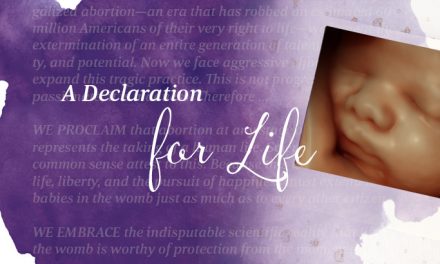When it comes to testing and research in laboratories, using human subjects only occurs under the strictest regulations and oversight. But what happens if the tests require the use of preborn or fetal tissue? Unsurprisingly, the ethical issue of handling preborn tissue is not given the same level of oversight as a cancer patient receiving an experimental treatment. The Department of Health and Human Services (HHS) is trying to change that.
On July 26, HHS announced that the National Institute of Health (NIH) would require researchers who want to use preborn tissue for scientific studies to justify why aborted remains are essential to their project. There are those within the scientific community who disagree with the tighter regulations. An online article in Inside Higher Ed stated that the new requirements amounted to a “setback.”
The use of preborn babies in medical research first came to the public’s attention when David Daleiden and the Center for Medical Progress released undercover videos of Planned Parenthood employees callously discussing how abortionists would (allegedly) alter the procedure to get the best specimens (i.e. preborn babies parts) to sell to laboratories. It also appeared that Planned Parenthood was making a profit from the trade in preborn remains. The country was shocked. Abortion may be legal, but (allegedly) profiting off the sale of the remains of aborted babies is not.
In response to the negative attention the undercover videos put on researchers that use preborn tissue, the Scientific American tried to justify its use by arguing that not using aborted tissue could be considered “wasteful.”
This sentiment was brought up in two different articles, and it is a belief that is likely shared throughout much of the industry. Neurobiologist Larry Goldstein describes it like this, “We are not happy about how the material became available, but we would not be willing to see it wasted and just thrown away.”
In Science Magazine, an article talks about how the tissue should be used because the remains “would otherwise be discarded.”
Everything about that reasoning is profoundly wrong and, in many ways, deeply disturbing. The idea that by not using the tissue it is somehow wasted is wrong. Human life, regardless of its form, stage of development or mental capacity, is never a “waste.” All human life is a gift and should be treated with dignity.
HHS is trying to change that by requiring scientists to “describe the process they will use to obtain consent to use tissue from a woman having an abortion.” In addition, the applicants will also have to explain how they plan on handling the remains after the experiment has been completed. This is a way of ensuring that the tissue is only used when absolutely necessary and that the remains are treated with dignity and respect.
To not use preborn remains may seem like a “waste” to scientists, but they have the wrong perspective. Every piece of tissue they have represents a life that was tragically cut short because a woman’s right to choose superseded a child’s right to exist. The waste is not that the remains can’t be used, but that a life was never lived.






